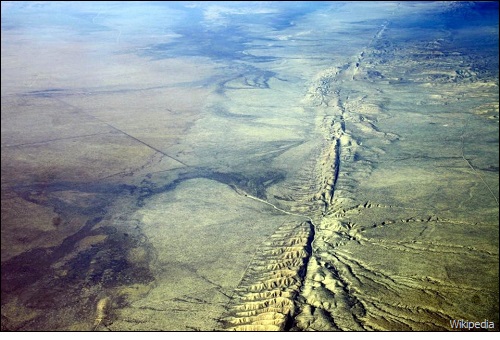
|
|

|
|
| April 28, 2024 |
|
Center of California's San Andreas fault could cause even bigger earthquakes, says study 
Larger earthquakes at the center of California's huge San Andreas fault line are more likely than previously thought, according to a study published in the journal Geology.
The research challenged earlier assumptions that the central section of the San Andreas Fault did not create severe earthquakes, compared to other parts of the fault. The authors suggested instead that serious earthquakes of large magnitudes have happened there in the past and could happen again. The San Andreas Fault is the border section between two massive tectonic plates under the surface of the Earth, the Pacific and North American plates. It stretches almost 800 miles through California, reaching past San Francisco in the north and almost as far south as San Diego. At the two extremities in the north and south, the plates are relatively static and can see large pressures built up over time that produce big earthquakes when they move. This happened with devastating consequences in the 1906 San Francisco earthquake, a 7.9 magnitude quake in the northern section of the fault that claimed the lives of over 3,000 people. In the south at least 57 people died in 1994 when a 6.7 magnitude earthquake struck at Northridge near Los Angeles. In contrast to these two volatile sections of the San Andreas fault, the parts of the plates at the central section are not static but move past each other in slow motion at around one inch per year. Scientists thought this "creeping" section of the fault tended to avert any large pressure build-ups and negate chances of big earthquakes there. The research found otherwise. Scientists examined the degree of heating in rocks almost two miles below the surface in the central section. Material down there can offer clues to previous earthquake activity because rocks heat up with friction when earthquakes occur. The scientists found no evidence of large quakes in the central section in the last 2,000 years but said larger earthquakes had happened there further back in time. "This means we can get larger earthquakes on the central section than we thought," lead author Genevieve Coffey, from Columbia University's Lamont-Doherty Earth Observatory, told Columbia Climate School news. "We should be aware that there is this potential, that it is not always just continuous creep," she said. Their analysis of rocks in the central section of the fault showed evidence of earthquakes displacing rocks by more than five feet, which would equate to an earthquake of around 6.9 in magnitude (larger than the fatal 1994 Northridge earthquake). Even larger earthquakes than that could also be possible in the central section, the authors said. "Ultimately, our work points to the potential for higher magnitude earthquakes in central California and highlights the importance of including the central [San Andreas Fault] and other creeping faults in seismic hazard analysis," the study said. (Source: Newsweek) Story Date: March 1, 2022
|